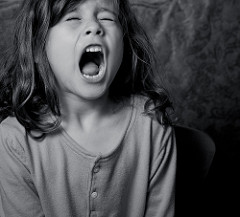 Many young children struggle with frustration tolerance. Anger and frustration are powerful emotions, and children’s reactions can be intense in the moment. As adults, we know when our anger buttons are pushed. We know what we need to do to work through something frustrating in an appropriate manner. Kids, however, don’t enter this world with a pocket full of frustration management skills.
Many young children struggle with frustration tolerance. Anger and frustration are powerful emotions, and children’s reactions can be intense in the moment. As adults, we know when our anger buttons are pushed. We know what we need to do to work through something frustrating in an appropriate manner. Kids, however, don’t enter this world with a pocket full of frustration management skills.
Developing coping strategies to deal with frustration requires time and practice.
The good news is that parents can help kids build frustration tolerance skills at home. With a little bit of guidance (and a lot of patience), you can teach your little one how to cope when the going gets tough.
Try a little body mapping. Body mapping is one of my favorite strategies from “The Happy Kid Handbook” because it helps kids of all ages. Draw the outline of a person (or if you’re like me, Google and print). Ask your child to think about all the places on his body that feel sore or different when he’s mad. You might point out that your heart races when you’re mad, and that makes your head feel dizzy. Doing this exercise with your child is important. Color all of those places red. Tell your child that when those places start to feel red, his body is signaling him to get help in a frustrating moment.
Learn about triggers. All kids are different and no two will have the exact same triggers of frustration, but there are a few common triggers to watch for:
- transitions
- negative peer interactions (or perceived negative interactions)
- challenging academics (yes, even in preschool—cutting with scissors can be very frustrating)
- feeling misunderstood by adults or peers
- lack of control
- hunger
- exhaustion
- unexpected situations
You can help your child understand his specific triggers by keeping a trigger tracker. When you talk about a frustrating situation with your child, make a note of what happened just prior to the event, the time of day and what was happening when the meltdown occurred.
Create a mad list. Ask your child to name all of the things that make him mad. Write down his list on a piece of paper while he vents his emotions. Provide empathy and understanding while you do this. Kids need to feel understood, and a simple, “Ooh, that makes me mad, too!” shows that you get it. Once the list is complete, ask your child to tear it into tiny pieces (this provides a much needed physical release of emotion) and throw them in the air. Then collect the pieces together and throw them out for good.
Teach the stoplight with deep breathing. Ask your child to sit comfortably and relax his muscles. Count to four while your child inhales, count to three while your child holds his breath, and then count to four while your child exhales. Repeat several times and practice regularly (bonus tip: this also works wonders for worriers).
Next, teach the stoplight. All kids know that red means stop, yellow means slow down, and green means go. Take it a step further by teaching them to visualize a red light to stop in a moment of frustration. This is when they can tap into deep breathing to calm their minds and bodies. When they shift to a yellow light, they should think of three possible solutions (Ask the teacher for help? Try again? Ask a friend?). When they visualize the green light, they can pick an option and move forward. Go ahead and create a big stoplight out of construction paper to tape to your fridge for reference. Over time, this process will become second nature and the meltdowns will fade away.
Excerpted from the Expert Tips & Advice article “How to Teach Frustration Tolerance to Kids” on PBS Parents.
The author, Katie Hurley, LCSW is a child and adolescent psychotherapist and parenting educator in Los Angeles, CA and the author of The Happy Kid Handbook: How to Raise Joyful Children in a Stressful World.
Source: PBS | How to Teach Frustration Tolerance to Kids, https://www.pbs.org/parents/thrive/how-to-teach-frustration-tolerance-to-kids | Copyright © 2022 Public Broadcasting Service (PBS)
This resource is filed under:







